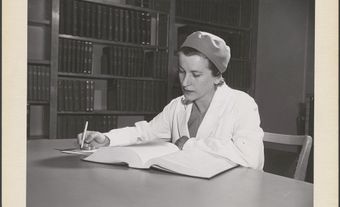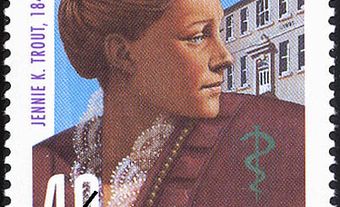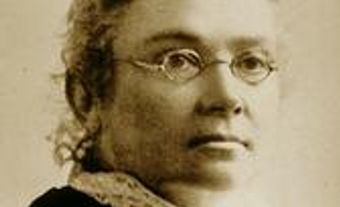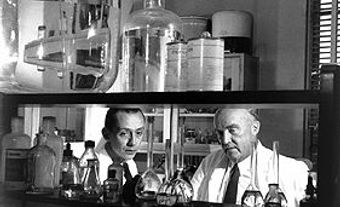Jennie Smillie Robertson, physician, surgeon and teacher (born 10 February 1878 in Huron County, ON; died 26 February 1981 in Toronto, ON). Smillie is considered the first recorded female surgeon to practise in Ontario. She also performed the first major gynecological surgery in Canada.
Click here for definitions of key terms used in this article.

Undated portrait of young Dr. Smillie, courtesy of The Miss Margaret Robins Archives of Women’s College Hospital.
Early Life and Education
Jennie Smillie was born in 1878 near the village of Hensall in Huron County, Ontario. Her parents, Benjamin Smillie and Jane Buchanan, were farmers. Smillie was the third of seven children. At the age of five, Smillie met a female doctor who was travelling to India to become a missionary. Smillie decided that she, too, wanted to become a doctor. She was also inspired by the doctor who took care of her father when he was dying of tuberculosis. She was six years old when her father died. Her eldest brother took over the family farm. Smillie’s mother supported higher education and encouraged her and her siblings to attend secondary school. Smillie attended public school in Hensall and Seaforth.
Smillie got her teaching certificate when she was 18. She taught for several years, earning $300 each year, until she saved enough money to attend medical school. In 1905, Smillie attended the Ontario Medical College for Women in Toronto. However, in 1906, the University of Toronto’s Faculty of Medicine officially began accepting women into their program. This led to the closure of the Ontario Medical College for Women, and Smillie completed her medical training at the University of Toronto. (See alsoMedical Education.)
Medical Career
Jennie Smillie graduated from medical school in 1909. She moved to Philadelphia to complete a residency at the Woman’s Medical College of Pennsylvania. At that time, no medical residencies or internships were available to women in Canada.
After completing her residency in 1910, Smillie returned to Toronto. There, she started a private medical practice. Smillie wanted to train as a surgeon, but no surgeon in Toronto was willing to train her.
In 1911, Smillie returned to the Woman’s Medical College of Pennsylvania to train in surgery with a female physician. After six months, she returned to Toronto. She continued to struggle to find a hospital where she could practise surgery. Although Smillie was a skilled and confident physician, none of the local hospitals were willing to let her perform surgery because of her gender.
In the early 20th century, many surgeries were performed in private homes rather than hospitals. Smillie performed her first surgery — removing an ovarian tumour — at the kitchen table in her patient’s home. This made her the first female physician to perform major gynecological surgery in Canada. (See also History of Medicine to 1950).
Women’s College Hospital
Jennie Smillie met several other female doctors who had trouble finding a hospital in Toronto where they could perform surgery. Together, this group of female physicians and specialists rented a house that served as a temporary hospital. They worked with a group of influential women in Toronto to establish a more permanent hospital for women that was run by women doctors. This new hospital would incorporate Toronto’s women-run medical clinic called The Dispensary.

The first hospital at 18 Seaton Street had seven beds. Courtesy of The Miss Margaret Robins Archives of Women’s College Hospital.
In 1911, Women’s College Hospital opened on 18 Seaton Street in Toronto. It began with seven beds, but over time, the hospital grew and moved to larger premises. It also became a prominent teaching hospital. Now affiliated with the University of Toronto, Women’s College Hospital continues to promote equity and innovation in health.
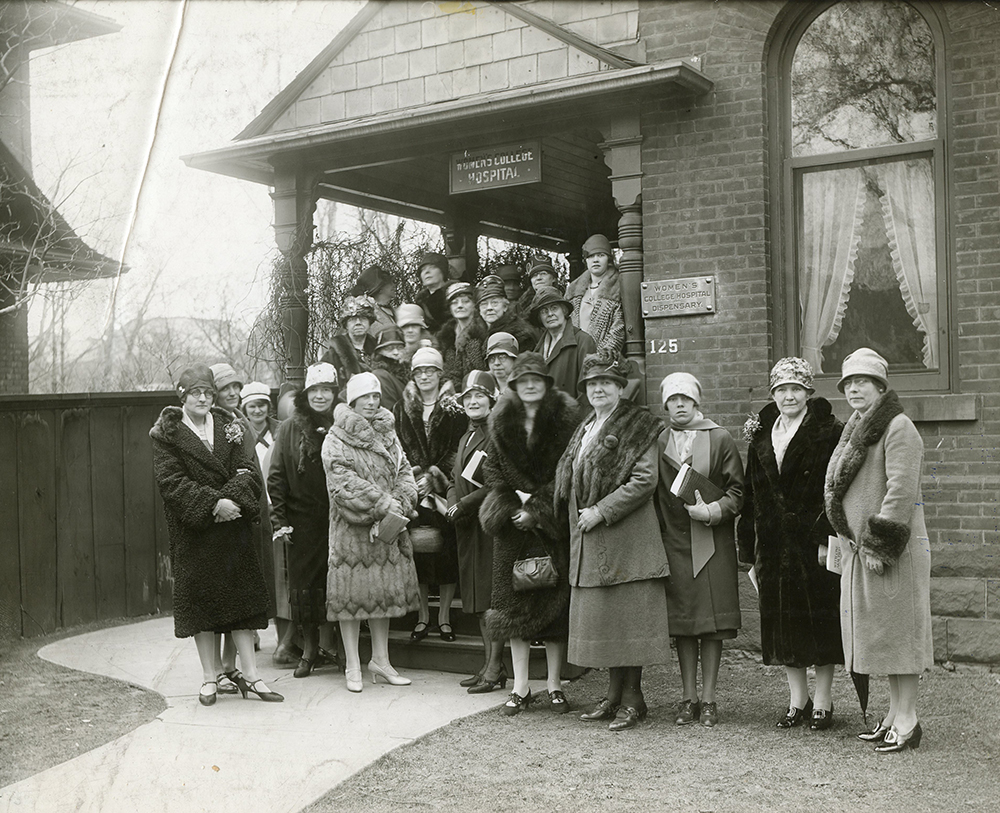
Women volunteers went door-to-door collecting money to help fund the new Women’s College Hospital building. Courtesy of the Miss Margaret Robins Archives of Women’s College Hospital, L-00977.
Smillie remained involved in Women’s College Hospital for most of her medical career. She was the associate chief of gynecology from 1912 to 1942. Throughout her career, Smillie performed many gynecological surgeries. She also performed abdominal surgeries, such as appendectomies (removal of the appendix), and provided maternity care.
Other Leadership Roles
Jennie Smillie was one of the founding members of the Federation of Medical Women of Canada, alongside cardiac pathologist Maude Abbott. Founded in 1924, the federation continues to advocate for women’s health issues and support women physicians. Smillie was interested in politics and was a member of the Women’s Liberal Association, eventually serving as president.
Later Life and Legacy
Jennie Smillie practised medicine until 1948, when she retired at the age of 70. She then married Alex Robertson, whom she had known for 50 years. They had met in 1898, when Smillie was a young teacher pursuing a career in medicine instead of marriage. The couple spent 10 years together before Alex Robertson died in 1958.

Undated portrait of an older Dr. Smillie Robertson, courtesy of The Miss Margaret Robins Archives of Women’s College Hospital.
Smillie died in 1981, at the age of 103. She is buried in Mount Pleasant Cemetery in Toronto. In 2013, the village of Hensall, Ontario named Dr. Jennie Smillie Park in her honour.
As the first recorded female surgeon in Canada, Smillie paved the way for women in medicine and promoted the advancement of women’s health. (See also Women in STEM).

 Share on Facebook
Share on Facebook Share on X
Share on X Share by Email
Share by Email Share on Google Classroom
Share on Google Classroom
